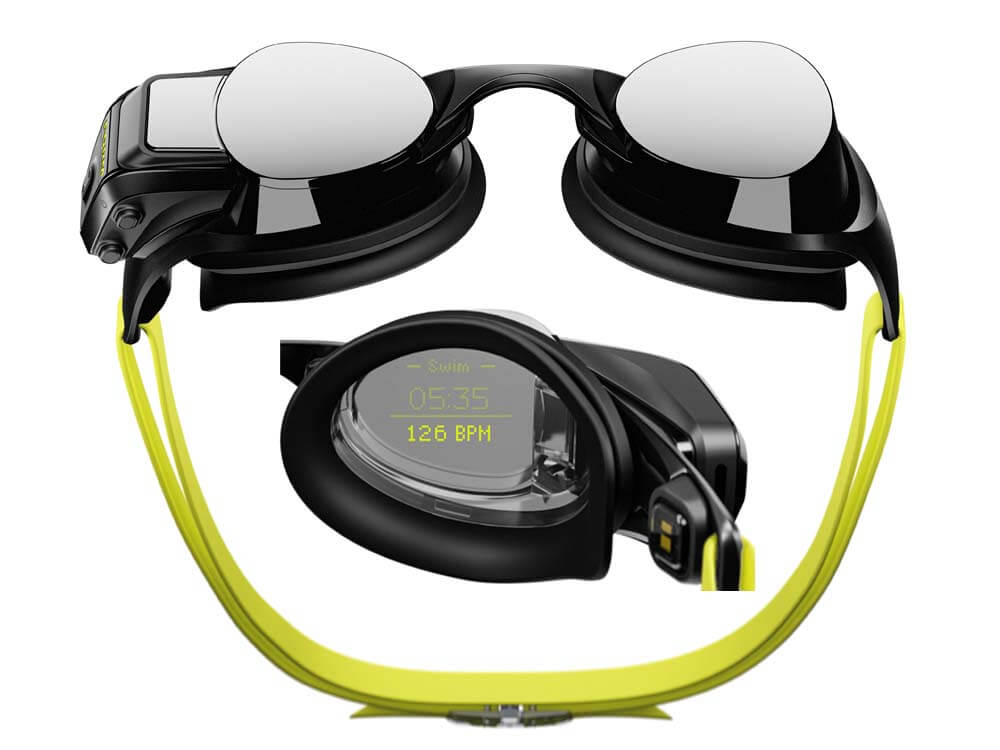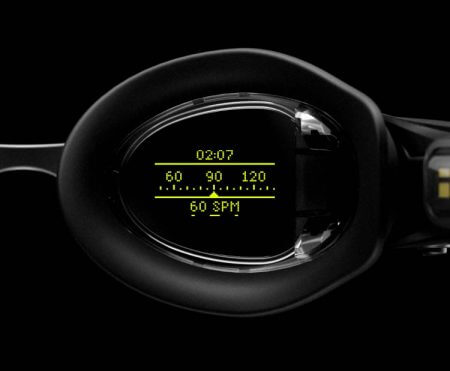Tech Tuesday: FORM Smart Swim 2 Goggles Gives Instantaneous, Comprehensive Feedback (Win a Free Pair!)

Tech Tuesday: FORM Smart Swim 2 Gives Instantaneous, Comprehensive Feedback
Win a pair of FORM Smart Swim 2 Goggles. Keep an eye out on Swimming World’s social-media channels for details!
The first version of the FORM Smart Swim Goggles was aimed at triathletes, seeking to provide instant data in a sport where such information was not readily available unless an athlete was stopped (such as with a wrist device). The biking and running legs of triathlon have become data-based, and most triathletes do not come from a swimming background, creating a challenge in adopting a sport so technical and feel-based. So the first advanced FORM goggle was designed to teach stroke rate, RPM and stroke count, among the variables a triathlete might need to know for understanding sets.
Now, the upgraded version of the goggle provides data in a manner designed for competitive and non-competitive pool swimmers. The staff at FORM, including two-time Canadian Olympian Scott Dickens, considered that the need for data feedback in elite swimming is minimal with so much coaching, but at lower levels of the sport, particularly among high-school-age athletes, it’s harder to get one-on-one instructional time. But the FORM Smart Swim 2 can fill that void.
The FORM Smart Swim 2 provides a data screen in the middle of the goggle (the right eye is the default setting, but it can be switched). FORM used an augmented reality display that was kept from the first version of the goggle, but this upgraded edition is 15-20% smaller than the original while providing a more hydrodynamic look and feel.
Before swimming in the goggle, setup is required using the FORM app on a smartphone. Once synced, you can use the dashboards in the app to select a default mode for pool swims, and “Intervals” is the one designed for swimmers in the midst of a workout. From there, you can set your screens for swimming, turns and rest periods. Each screen shows three pieces of data at one time.
In the top right corner of all screens is a heart rate monitor. FORM’s internal testing showed that the measured heart rate is accurate compared to wrist watches and chest straps. Typically, swimmers measure heart rate with six or 10-second counts at the conclusion of a repetition, but those numbers are really only estimates since heart rate can drop so quickly.
For swim mode, I chose interval timer for my second line of data and stroke rate (real time) for my bottom line. However, after my first swim, I noticed that I was not using that stroke rate data extensively, and it can only measure freestyle, so I switched to pace per 50 for future swims.
The turn screen shows up for 3-5 seconds after each wall (the user can pick the exact time), and I selected heart rate, split time (last length) and split time (current interval) for my screen. That allowed me to view both my times for one lap and times for the entire swim up to that point. Finally, my rest screen contains heart rate, an interval timer that is a running clock (since the last time I pushed off) as well as a rotating bottom line. I selected split time (current interval), stroke rate (current interval) and distance (workout).

Photo Courtesy: FORM
Get that all set up — customized to your own preferences, of course — and you are ready to swim. Before you dive in, you must select “pool” and then pick the setup of your facility, 50-meter, 25-meter or 25-yard. Then, you dive in and get started.
I could immediately see the benefits of having this data available in real-time. In my own swimming, as a masters swimmer currently training largely by myself, the goggles with built-in clocks are most helpful for maintaining pace on longer swims, especially in freestyle. Simply, the instant feedback keeps me honest in my efforts.
But since I generally dislike wearing anything on my wrist while swimming, I had never experienced instant heart rate when swimming, so the introduction of that data point helped show me for the first time an accurate measure of how hard I was working.
For swimmers like me constantly focused on time and interval, you are in luck: the Smart Swim 2 has a running clock plus splits down to the hundredth. In my swims, the goggle was nearly perfect in measuring when I pushed off the wall, turned and rested. Then, when I’m done, syncing the goggle to my phone allows me to review my workouts, with data of time, heart rate and more available for my perusal. The goggles can identify what stroke you are swimming or what drills you are practicing, although they might produce less accurate readings of time, distance and stroke on kick sets.
Most features of the FORM Smart Swim 2 are available for free, including instant data and workout tracking, and swimmers get a two-month trial of premium features that can be added to their account later for a small fee. This includes the SwimStraight feature, which is race-approved for triathlon and helps guide swimmers in a straight line, and HeadCoach, which provides real-time, digital coaching in the goggle and help within the app for freestyle, mostly focused on head position with ranges based on data science for head pitch and roll.
Another premium feature is the ability of the goggle to deliver your workout in real-time, either a pre-made workout from FORM or one of your own that is plugged into the app. For my second swim with the device, I uploaded my workout into the goggle and received constant reminders of stroke, distance, effort level and equipment. The feature is perfect for swimmers who like to plan workouts in advance but can never remember their own sets. Better to let the goggle remind you than have a piece of paper stuck to the pool deck and hope it does not get washed away.
During my initial swims, I encountered problems fitting the goggle correctly to my eye, perhaps because I typically swim in low-profile goggles that this one definitely is not. FORM provides five sizes of nose bridge, and I ended up going with the smallest. I had some issues with leakage, but FORM offers replacement eye seals. I installed those, and the result was a perfect swim with no leaky goggles.
I even used the Smart Swim 2 to prove to a facility director that his pool had a noticeable current in its long course setup. I noticed a difference in splits going one way versus the other while practicing in a middle lane, but the discrepancy was even worse on another day when I swam in lane two. On a set of fast 50-meter swims, my times on even-numbered lengths were consistently two seconds faster than my results from odd-numbered lengths despite nearly identical effort.
The FORM Smart Swim 2 gets a strong recommendation because it provides extensive information for a swimmer that they can use to adjust their effort or stroke almost immediately to ensure the set goes as planned. I have been swimming competitively for more than two decades, and I have never felt as connected with my workout and what I was trying to achieve than I have with the Smart Swim 2.
Purchase your own pair of goggles here.




